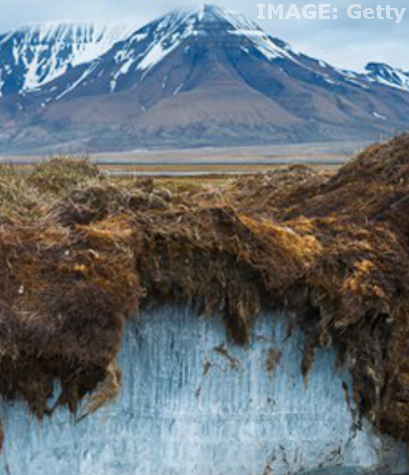Pollution rises in rapid thaw
 New research has investigated the carbon emissions of melting permafrost.
New research has investigated the carbon emissions of melting permafrost.
Researchers in the US say abrupt thawing of permafrost will double previous estimates of potential carbon emissions from permafrost thaw in the Arctic, and is already changing the landscape and ecology of the circumpolar north.
Permafrost, a perpetually frozen layer under the seasonally thawed surface layer of the ground, covers 18 million square kilometres at high latitudes or one quarter of all the exposed land in the Northern Hemisphere.
Current estimates predict permafrost contains an estimated 1,500 petagrams of carbon, which is equivalent to 1.5 trillion metric tons of carbon.
The new study distinguishes between gradual permafrost thaw, which affects permafrost and its carbon stores slowly, versus more abrupt types of permafrost thaw.
Some 20 per cent of the Arctic region has conditions conducive to abrupt thaw due to its ice-rich permafrost layer.
Permafrost that abruptly thaws is a large emitter of carbon, including the release of carbon dioxide as well as methane, which is more potent as a greenhouse gas than carbon dioxide. That means that even though at any given time less than 5 per cent of the Arctic permafrost region is likely to be experiencing abrupt thaw, their emissions will equal those of areas experiencing gradual thaw.
This abrupt thawing is “fast and dramatic, affecting landscapes in unprecedented ways,” said Dr Merritt Turetsky, lead author of the study published in Nature Geoscience.
“Forests can become lakes in the course of a month, landslides occur with no warning, and invisible methane seep holes can swallow snowmobiles whole.”
Abrupt permafrost thaw can occur in a variety of ways, but it always represents a dramatic abrupt ecological shift, Dr Turetsky added.
“Systems that you could walk on with regular hiking boots and that were dry enough to support tree growth when frozen can thaw, and now all of a sudden these ecosystems turn into a soupy mess.”
Permafrost contains rocks, soil, sand, and in some cases, pockets of pure ground ice. It stores on average twice as much carbon as is in the atmosphere because it stores the remains of life that once flourished in the Arctic, including dead plants, animal and microbes.
This matter, which never fully decomposed, has been locked away in Earth’s refrigerator for thousands of years.
As the climate warms, permafrost cannot remain frozen. Across 80 per cent of the circumpolar Arctic’s north, a warming climate is likely to trigger gradual permafrost thaw that manifests over decades to centuries.
But in the remaining parts of the Arctic, where ground ice content is high, abrupt thaw can happen in a matter of months – leading to extreme consequences on the landscape and the atmosphere, especially where there is ice-rich permafrost.
This fast process is called “thermokarst” because a thermal change causes subsidence. This leads to a karst landscape, known for its erosion and sinkholes.
The findings bring new urgency to including permafrost in all types of climate models, along with implementing strong climate policy and mitigation, Dr Turetsky added.
“We can definitely stave off the worst consequences of climate change if we act in the next decade,” said Dr Turetsky.
“We have clear evidence that policy is going to help the north and thus it's going to help dictate our future climate.”







 Print
Print